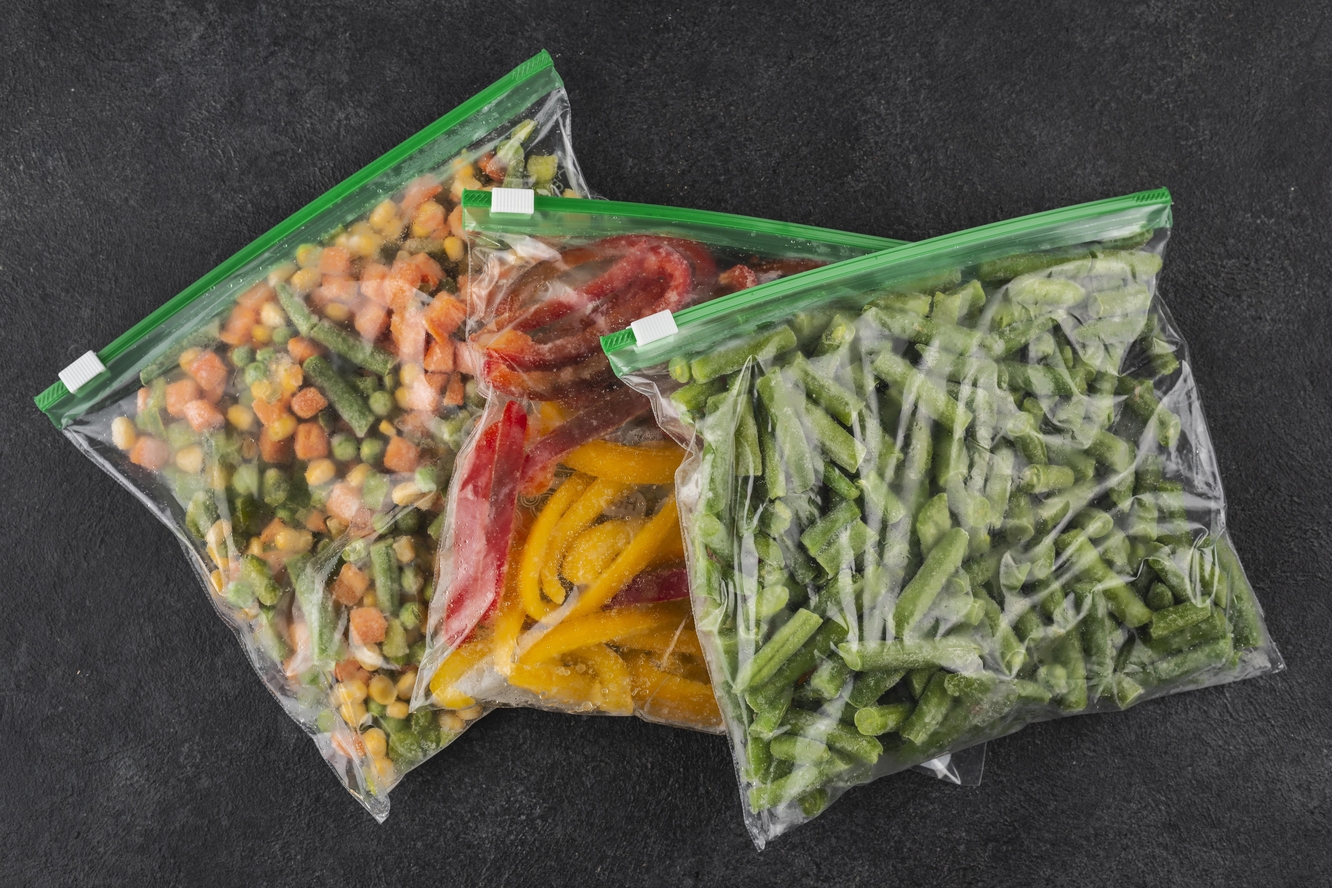If you’ve been using Ziploc bags to microwave or freeze food, chances are you’ve been exposing yourself to dangerous microplastics — or at least, that’s what a proposed class-action lawsuit is alleging. The suit, filed by California’s Linda Cheslow on April 25, claims that Ziploc misrepresented the safety of its plastic bags. So can you microwave Ziploc bags?
Although Ziploc bags are marketed as “microwave-safe” and “suitable for freezer use,” the lawsuit argues that they release dangerous microparticles when subjected to extreme temperatures. When ingested, these plastic particles have been shown to affect the body’s endocrine system, interfere with the gut microbiome, and even cause DNA damage, which can lead to illnesses like cardiovascular disease and cancer. So what’s the truth, and what do we need to know about using Ziploc bags moving forward?
Want more timely wellness news? Sign up for the newsletter for more well-researched, non-toxic living guidance and smart wellness advice.
What Are Ziploc Bags Made Of?
Ziploc bags are made with polyethylene and polypropylene, both of which are common food-grade plastics. A 2008 study in Water Research had already indicated that high temperatures could speed up the rate at which substances leach from polyethylene bottles into the water they contain1, and a 2022 study in Science of the Total Environment showed that polyethylene can degrade and leach microplastics when exposed to stress and heat2. In that case, are Ziploc bags microwave-safe? It’s best to err on the side of caution and say no.
Microplastics are small fragments of plastic measuring under 5 millimeters in length. Research continues to reveal their pervasiveness in the world around us, as studies have found microplastics in plants, animals, air, and water — not to mention in our bodies. We’ve covered the presence of microplastics in everything here at Organic Authority, from our tea bags to nanoplastics in our own brains. Needless to say, we don’t need yet another source of microplastics in our lives.
Is Polyethylene Toxic?
A study published in 2023 in Science of the Total Environment showed that exposure to the microplastics resulting from polyethylene decreased cell viability and could contribute to increased risk of colon cancer3. A 2022 study in Environmental Research also indicated that these microplastics could alter gut makeup and immune response4.
And is polypropylene toxic? Although the Environmental Protection Agency (EPA) considers polypropylene “one of the safer plastics,”5 a 2019 study in Environmental Science & Technology linked some polypropylene products to the disruption of androgen hormones6. A 2023 study in Particle and Fibre Toxicology showed that exposure to polypropylene could lead to lung inflammation7, and it was also found to cause a stress response in cells.
The Ziploc Lawsuit
The Ziploc class-action lawsuit alleges that manufacturer S.C. Johnson failed to warn consumers of the dangers of these products, and that reasonable consumers would not have paid as much for this brand had they known that the products could leach harmful microplastics into their foods. And they certainly wouldn’t have reused the bags, which release more microplastics as they degrade8.
“The Material Omission is meaningful to consumers as studies show that the ingestion of microplastics poses serious health risks, including potential harm to the digestive tract, immune system and reproductive system,” the lawsuit reads.
In response, a spokesperson for S.C. Johnson told USA Today, “we believe Ziploc products are safe when used as directed and the claims in this lawsuit are without merit.9“
How Can Consumers Avoid Microplastics?
Not to state the obvious, but you should start by doing your best not to put Ziploc bags in the microwave or the freezer. While it’s impossible to avoid microplastics completely, swapping common sources of plastic for alternatives is a great way to reduce your exposure to microplastics.
For a comprehensive list of steps, start with our guide on how to avoid microplastics in the kitchen. And as you seek alternatives for Ziploc bags, try instead using glass jars for food storage, and transport items in reusable silicone bags like Stasher or Bee’s Wrap.
Sources:
- https://www.sciencedirect.com/science/article/abs/pii/S0043135407005246
- https://www.sciencedirect.com/science/article/abs/pii/S0048969721067619
- https://www.news-medical.net/news/20230117/Study-Exposure-to-high-doses-of-micro-sized-polyethylene-has-adverse-effects-on-cells.aspx
- https://www.sciencedirect.com/science/article/abs/pii/S0013935122005576
- https://pubchem.ncbi.nlm.nih.gov/compound/POLYPROPYLENE
- https://pubs.acs.org/doi/pdf/10.1021/acs.est.9b02293
- https://particleandfibretoxicology.biomedcentral.com/articles/10.1186/s12989-022-00512-8
- https://www.sciencedirect.com/science/article/abs/pii/S0025326X2100504X
- https://eu.usatoday.com/story/money/2025/05/12/ziploc-class-action-lawsuit-microplastics/83577508007/

